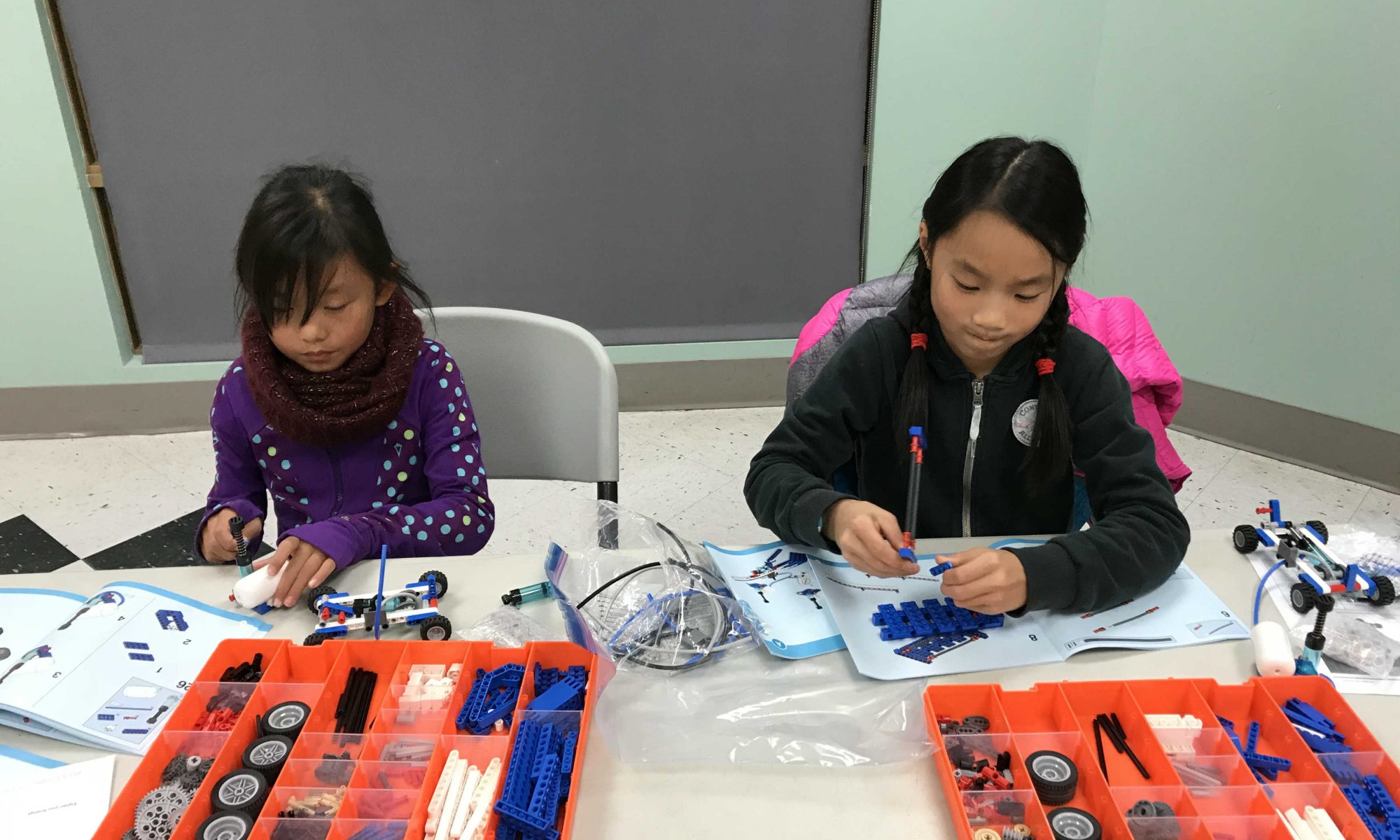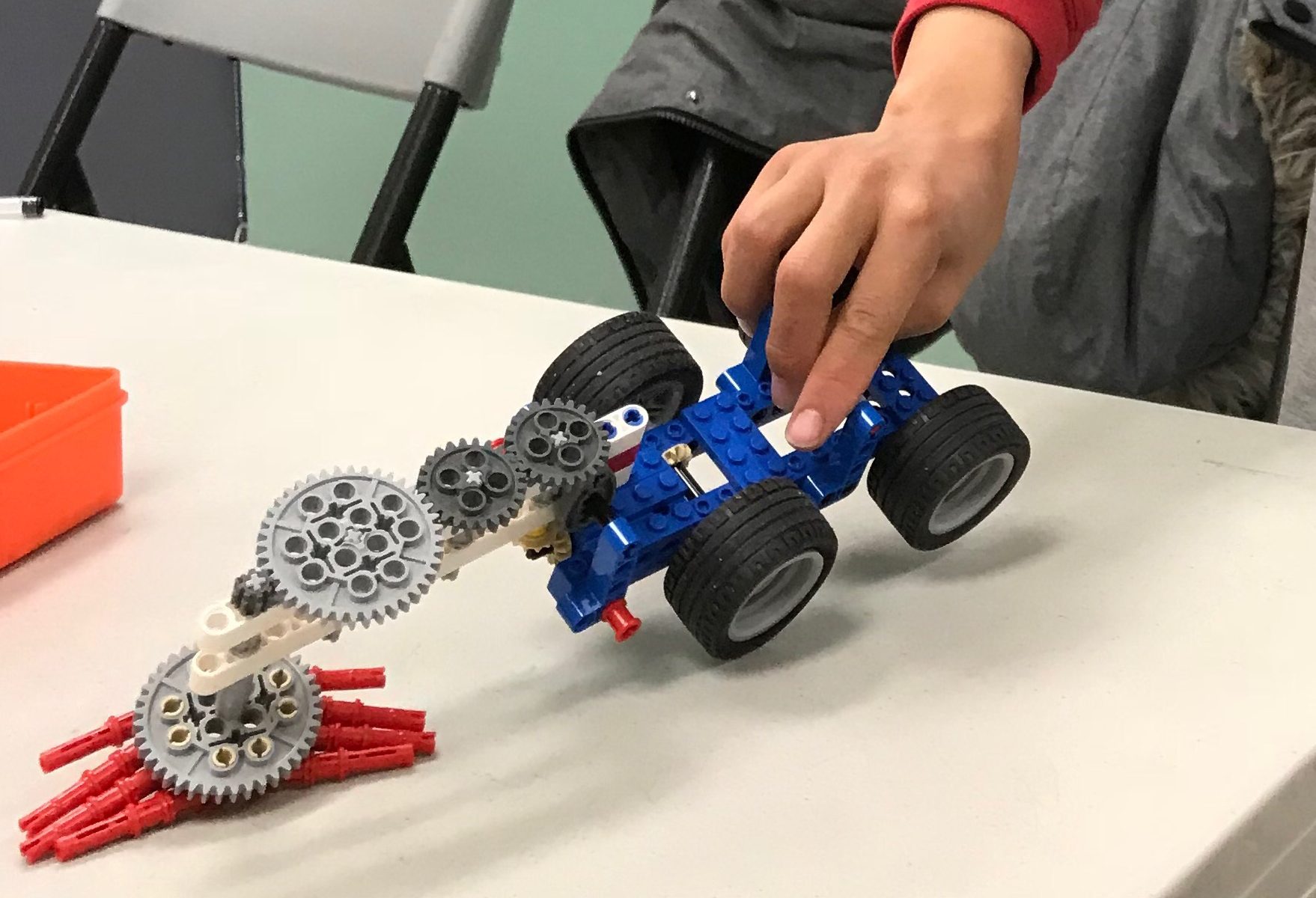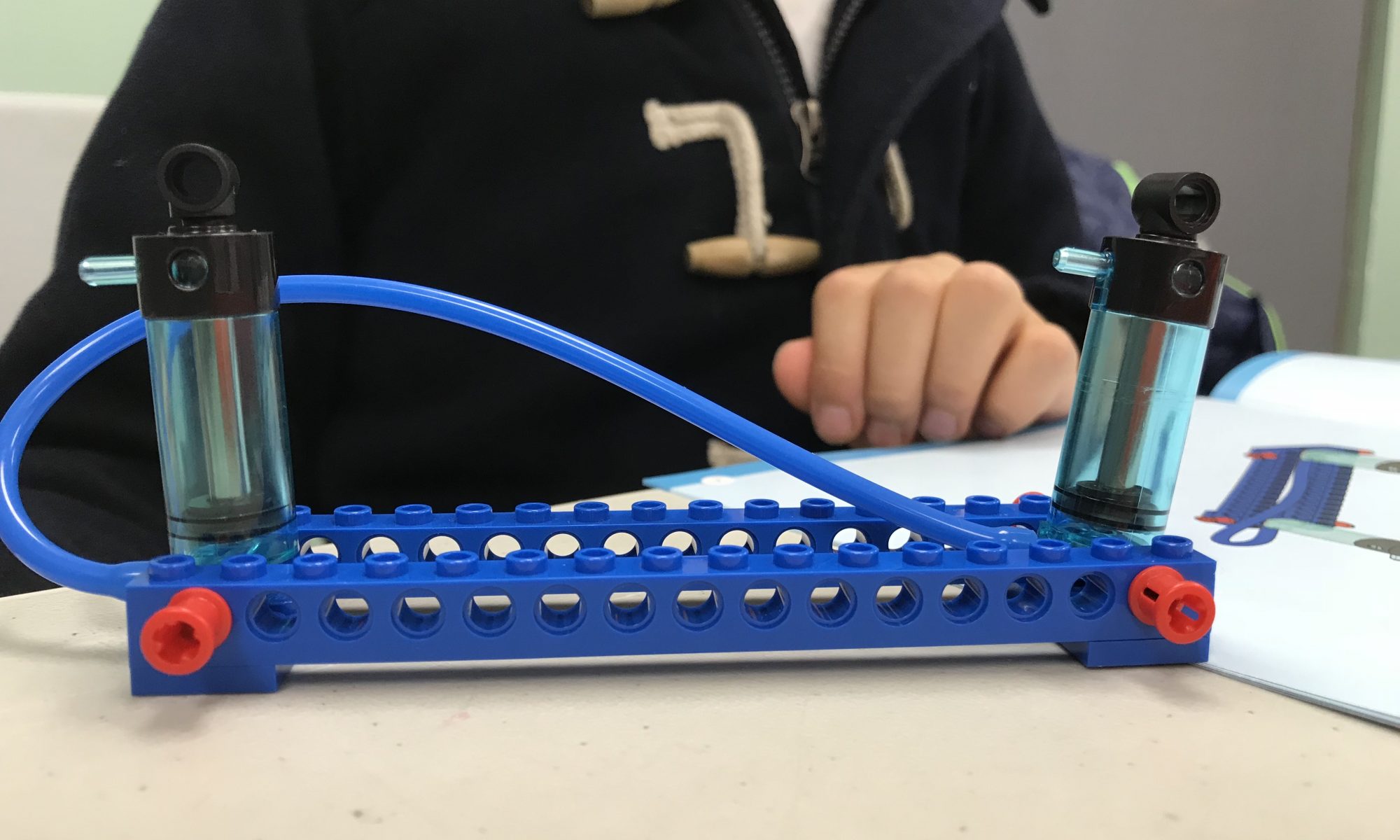The students first built a Lego Fly Wheeler, which can be used to get impression of the rotational moment of inertia. They conducted the experiments to observe the travel distances under the different fly wheeler weights. During the experiment, the students need to use the wheeler with different weights, thus the arm energy to get up to the same approximate initial speed are different. Due to the gearbox system connecting with the fly wheeler, the heavier the wheeler is, the more amount of energy is stores to transfer to moving or kinetic energy. The STEM information behind this section is the rotational moment of inertia and the gearbox system. All the students finished the model building part and did the experiment with different level. They enjoyed this section.
Communication ECA Phase III Class 4: Pneumatics: Scissor Lift 20171011
The theme of today is building a scissor lift model, which is the application of the pneumatic system of the last lecture. In this section, the built scissor model consist pneumatic components from cylinders and pumps to the air valve, the air tank, and the manometer. With the built model, the students got a deeper understanding of the design philosophy and working principles of the pneumatic system, which built a solid ground for the next following more advanced pneumatic application models. This section is a good example explaining the air storage system in the pneumatic system.
The STEM information behind this section is the application of pneumatic systems. The cylinder piston rod force output can be calculated by multiplying the air pressure with the piston area. All the students finished the model and the experiments. The application sections interest them more than the principal model introductions.
Communication ECA Phase I Class 4: Sweeper 20171004
The students first built a Lego Sweeper, which can be used to study the gear system. They conducted the experiment to observe the sweeper rotation speed under the different gear combinations. During the experiment, the students need to change the combination of gears, so the gear ratio is different, thus the rotation speed varies. The STEM information behind this section is the gear ratio of gear systems, which can be calculated by the gear teeth number of the passive driven gear divide by the active drive gear. All the students finished the model building part and did the experiment with different level. They enjoyed this section.
Communication ECA Phase III Class 4: Pneumatic: Principal Model 20171004
The theme of today is the principal model introduction of Pneumatic systems, which is the key tutor lecture of the next following four sessions. Generally, the chief purpose of this section is to learn the basic knowledge of the pneumatics systems by conducting several experiments.
In this section, 13 models with increasing complexity were built. The models consist components from just cylinders and pumps to the air valve, the air tank, and the manometer. With the complexity of the model increased, the students learned the design philosophy and working principles of the cylinder, the pump, the air valve, the air tank, and the manometer, which built a solid ground for the next following advanced pneumatic application models.
The STEM information behind this section is the pneumatic systems including the cylinder, tubes, and the air pressure measurement instruments. All the students followed the tutor instructions and finished the designed model experiments. The principal model introduction section is very informative but less interesting.
Communication ECA Phase III Class 2: Boat Pulley 20170920
The topic of today is the energy transfer study using the boat pulley built during the class. The students first built a mimic boat pulley model, then they conducted the experiment to lift the load up and observed the energy consumption. The students also calculated energy efficiency using the built model, which is one of the essential engineering concepts. The STEM information behind this section is the energy transformation between the electrical and potential energy. All the students finished the model building part and did the experiment with different level. They enjoyed this section.
Dr. Jie
Communication ECA Phase I Class 3: Hammer 20170927
The topic of today is the Hammer building. The students first built a Lego hammer, which can be used to mimic the nail drive. They conducted the experiment to observe how many times are needed to hit the axis into the anvil. During the experiment, the students need to change the cam wheel position, so the potential energy of the hammer varies thus the kinetics energy. The STEM information behind this section is the energy transformation between the potential and kinetics energy as well as friction forces. All the students finished the model building part and did the experiment with different level. They enjoyed this section.
Dr. Jie
Communication ECA Phase III Class 3: Wind Turbine 20170927
The theme of today is the wind turbine. Generally speaking, this section works pretty well. Quoted from Paul: “this is the most successful sections ever of Phase III. “
The model the students built is a wind turbine, which was used to charge the power meter during the experiment section. In the charging process, the wind turbine transferred the wind energy generated by a fan to electrical energy stored in the power meter. The experiment is a very good mimic to the real wind turbines used in industry. We can see many wind turbines on the way to the Waterton Lake National park. The students finished the model building part quick, and then they all came to the experiment table and conducted the experiment. During which I explained the STEM information to each of them, which is the power equals to voltage multiplies current. All students finished the experiments and filled the lab sheets. They love challenging projects.
Communication ECA Phase I 6:15 PM Class 2:The Beam Balance 20170920
The topic of today is the beam balance study. The students first built a beam balance and loads model, then observed the mechanical equilibrium in the aid of the built model. The STEM information behind this section is the mechanical advantage of the lever system. All the students finished the model building part and did the balance experiments with different level. They enjoyed this section.










